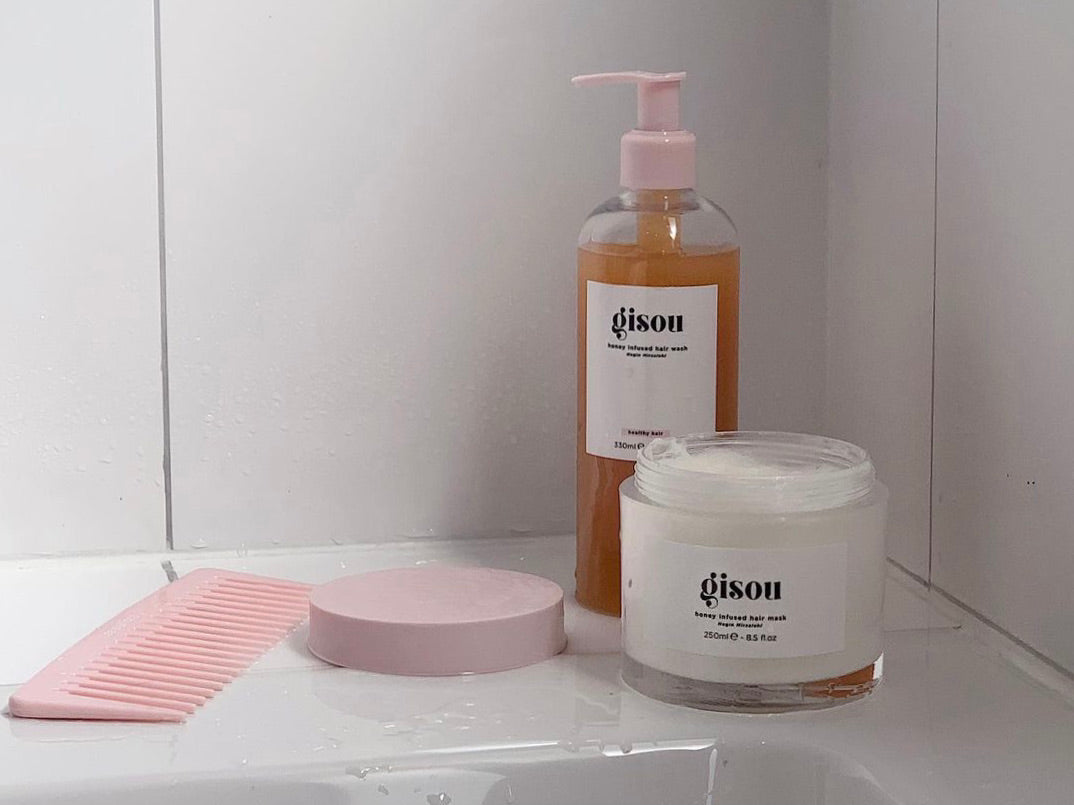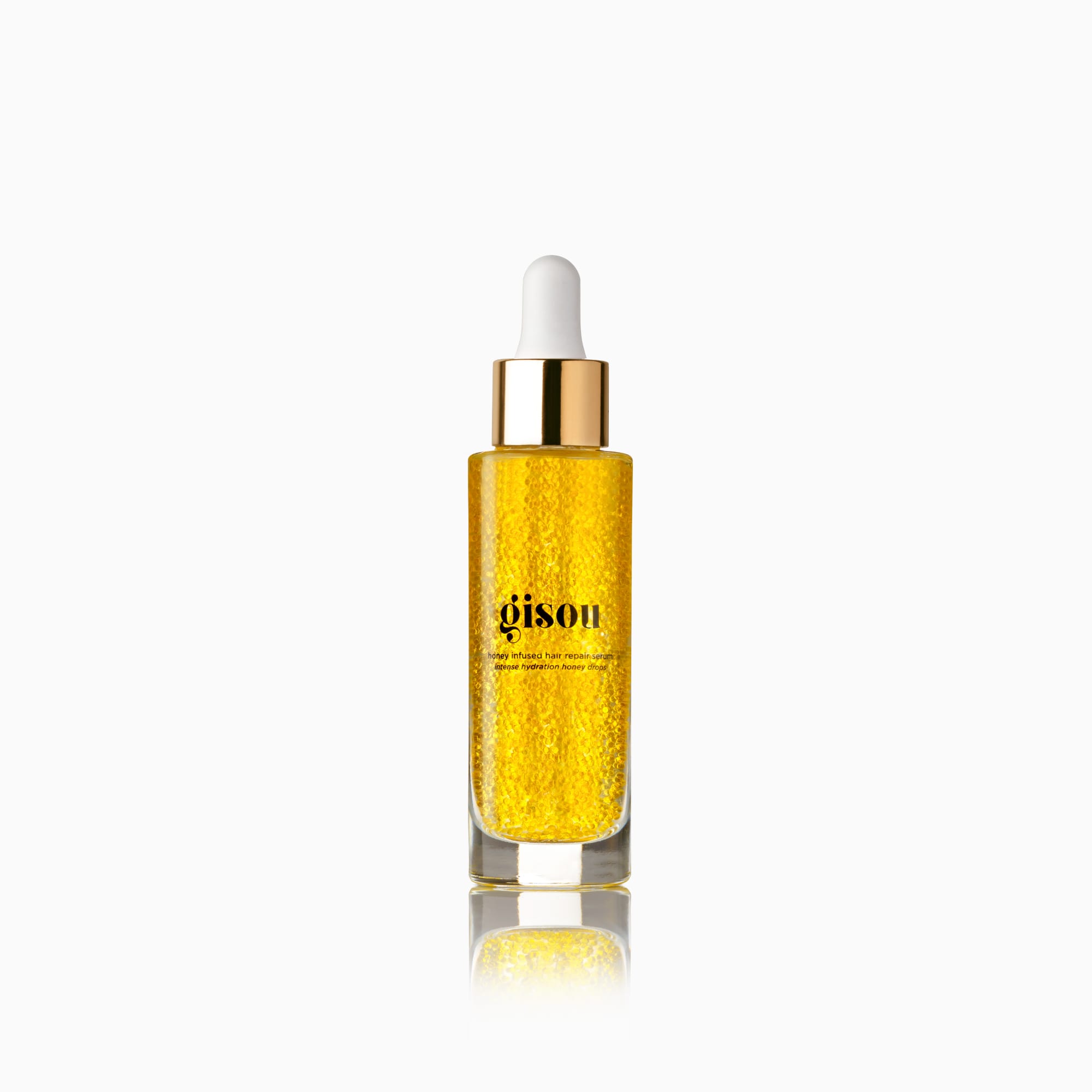What is Matted Hair? Untangling the Causes + Finding Relief
We all wake up with a few knots and tangles now and then, but matted hair is an entirely different challenge. What is matted hair, and what causes it? Hair matting… those stubborn knots and clumps that seem to have a mind of their own… can strike anyone, but certain factors put you at higher risk.
From everyday habits to hair type and texture, there are many reasons for hair matting. But thankfully, there are pain-free solutions that don’t require cutting off your hair! And we’re here to arm you with the knowledge and techniques you need to conquer the tangles and get your hair back to healthy and beautiful again.

What is Matted Hair?
Before we dive into the causes and solutions for matted hair, let’s first understand what hair matting actually is. Matted hair refers to tangled and knotted strands that become tightly woven together, forming clumps or mats.
Mats can occur anywhere on the head, from the roots to the ends of the hair. Hair matting happens when loose hair strands repeatedly tangle and twist themselves around attached hairs, leading to a tightly knotted clump.
Some people, especially those with curly or textured hair types or very dry hair, are more prone to matted hair, but there can be other contributing factors. For example, if you wear your hair in braids or dreadlocks and don’t comb it regularly to remove loose strands, it can become severely matted.
What Does Matted Hair Look Like?
The appearance of matted hair can vary based on the severity of the mats and how long they’ve been allowed to form. The most apparent sign of matted hair is the presence of knots and clumps. Hair mats can range in size from smaller knots to large clumps that incorporate significant portions of the hair.
Matted hair often feels rough, knotty, or tangled to the touch. It will have an uneven texture, with smooth sections that are interspersed with areas that are densely matted. The tangles create resistance, making it difficult or seemingly impossible to pass a comb or brush through the hair.
In severe cases of matted hair, visible clumps and clusters are noticeable to others. Overall, the hair may appear more frizzy and have a disheveled or untamed appearance. If you notice these signs in your hair, it’s essential to take action right away to prevent the mats from worsening and leading to further damage.
What Causes Hair Matting?
Hair matting can be caused by a variety of factors, from improper care and styling practices to hair type. Understanding what is causing your hair to mat can help you take proactive steps to address the issue and prevent matted hair in the future.
Long Hair
Long hair is beautiful, but it’s also more prone to knots and tangles due to its length. The longer the hair, the more opportunity there is for loose strands to intertwine with attached strands and create mats. Long hair is also more susceptible to friction from everyday activities like rubbing on your pillow or exposure to wind.
Curly or Coily Hair
Curly or coily hair types are more prone to matted hair due to the unique structure of their hair strands. The natural bends and coils in these hair types make it easier for strands to interlock and form mats. Curly and coily hair also tends to be drier and more fragile, further contributing to knots and tangles.

Dry Hair
Dry hair is more prone to matting due to its lack of moisture and increased fragility. When the hair lacks sufficient hydration, the cuticles become rough and raised, making it easier for individual strands to interlock and form knots.
Improper Washing Techniques
Your hair-washing routine can play a role in hair matting, too. For example, vigorous scrubbing or rubbing, or using harsh products can strip the hair of its natural oils, leaving it prone to dryness and tangles.
It’s also important to rinse the hair thoroughly after shampooing to prevent residue buildup. Product buildup can contribute to knots, tangles, and matting, as well as a dull appearance and lack of manageability.
Sleeping without Protecting Your Hair
Sleeping with loose hair is a leading cause of tangles and matting. As you toss and turn in your sleep, your hair rubs against the pillowcase, leading to friction and knots. Securing your hair and using a satin or silk pillowcase reduces friction and helps maintain the hair’s smoothness.
Hair Extensions and Wigs
Hair extensions and wigs offer a convenient way to change up your hairstyle, but they can also contribute to matting if not properly cared for. Improper installation, neglecting to detangle regularly, or using low-quality extensions can lead to matted hair. Be sure to follow the care instructions recommended for your specific product.

How to Detangle Matted Hair Painlessly without Cutting
Dealing with matted hair can be challenging, but with the right tools and techniques, you can detangle severe mats without causing unnecessary pain or damage to your hair. Here’s how to detangle matted hair painlessly without cutting.
Step 1: Start with Patience and Preparation
Detangling matted hair requires time, patience, and the right products and tools. Before you begin, gather a detangling brush, a wide-toothed comb, a leave-in conditioning spray, and some clips to section your hair. It’s important to work through the tangles gently and avoid rushing the process to avoid unnecessary damage.
Step 2: Apply a Leave-In Conditioner
To ease the detangling process, saturate the hair with a leave-in conditioner and detangling product. Our Honey-Infused Leave-In Conditioner helps to soften the hair, reduce friction, and make the knots more manageable. Allow the product to sit on your for several minutes before you begin the detangling process for better penetration and loosening of the tangles.
Step 3: Divide and Conquer
Divide your hair into manageable sections using the hair clips. You’ll want to focus on detangling one section at a time to prevent further tangling and make the process more systematic. Start with the ends and outermost layers of your hair, and gradually work your way upward and inwards.
Step 4: Gently Detangle the Hair
Begin by gently using your fingers to loosen the tangles in each section. Finger detangling can be especially helpful because it allows you to carefully separate the strands and offers more control, reducing the risk of pain or damage to fragile strands.
Once the knot is loosened, you can use a detangling brush and a wide-toothed comb to complete the detangling process and work your way through each section. If you encounter a particularly stubborn area, hold the hair above the knot with one hand and gently tease the knot apart, adding more leave-in conditioner as needed to reduce friction and allow the strands to glide more easily.
Step 5: Seek Professional Help if Needed
If you’re dealing with severe or persistent matting that seems difficult to handle on your own, consider seeking professional help. A skilled hairstylist can assess the condition of your hair and offer professional detangling services. They often have specialized tools and techniques to safely and effectively address even the most challenging cases of matted hair.
Restoring Vitality to Previously Matted Hair
After successfully detangling matted hair, it’s time to focus on restoring its vitality and promoting overall hair health. Matted hair is often accompanied by dryness, breakage, and a lackluster appearance.
With the right care and attention, you can revive your hair and bring back its natural shine and beauty. Here are some effective strategies for restoring vitality to previously matted hair.
Deep Conditioning Treatments
One of the best ways to restore moisture to your hair is through regular deep conditioning treatments. Our Honey-Infused Hair Mask is specifically formulated to repair, strengthen, and deeply hydrate the hair.
Apply the deep conditioning hair mask generously to your hair, focusing on the lengths and ends, and leave it on for at least 10 minutes, up to overnight. Rinse thoroughly and follow up with your regular conditioner to close the hair shaft and seal in moisture.

Moisturize Regularly
To combat dryness and prevent breakage, make moisturizing a regular part of your hair care routine. Use our Honey-Infused Leave-In Conditioner and Honey-Infused Hair Oil to hydrate your hair daily, focusing on areas that tend to be drier and more prone to breakage.
Trim Split Ends
Matted hair is often accompanied by split ends, which can hinder the overall health and appearance of your hair. Schedule regular maintenance trims to remove split ends and prevent them from traveling up the hair shaft. Trimming your hair every 6-8 weeks helps maintain the integrity of your hair, promotes growth, and minimizes the risk of future matting.
Gentle Styling Practices
Avoid hairstyles that put excessive strain on your hair or cause unnecessary friction, as these can contribute to further damage. Opt for loose, protective styles that minimize tension and rubbing. When using heat styling tools, always apply a heat-protecting spray and use satin or silk hair accessories to help reduce friction and maintain the smoothness of your hair.
Avoid Overwashing
Excessive washing can strip your hair of its natural oils, leading to dryness and increased susceptibility to tangles. Opt for a gentle, sulfate-free shampoo and reduce the frequency of washing to two or three times per week if possible. Our Honey-Infused Shampoo and Conditioner are ideal for hydrating and repairing all hair types.
Protect Your Hair While Sleeping
To prevent future damage or matting, protect your hair while you sleep. Use a silk or satin bonnet, scarf, or pillowcase to reduce friction and preserve the smoothness of your hair. You can also loosely braid or twist your hair into a high bun before bed to further minimize friction and tangles.
How to Prevent Matted Hair
Prevention is key when it comes to avoiding the frustration and hassle of dealing with matted hair. Start with a healthy hair care routine and make a habit of detangling your hair daily using a leave-in conditioner and wide-toothed comb to minimize damage and make the process easier.
Continue to moisturize and hydrate your hair daily with leave-in conditioner and hair oil, and a weekly deeply conditioning hair mask. Use a gentle shampoo and hydrating conditioner, and be sure to rinse your hair thoroughly to prevent product build-up.
Consider switching to satin or silk hair accessories and pillowcases permanently to minimize friction. Avoid excessive heat styling, and always use a heat protectant before blow drying, curling, or straightening to minimize potential damage.
And finally, schedule regular trims with your stylist to prevent split ends and maintain the health of your hair. Following a preventive haircare routine can significantly reduce the likelihood of experiencing matted hair.
Final Thoughts
By embracing healthy haircare and styling practices, and incorporating gentle detangling techniques, you can save yourself the frustration and discomfort of dealing with stubborn knots and mats. Our line of Honey-Infused Hair Care products is formulated to rebuild and repair the hair, resulting in softer, stronger, and shinier locks that resist knots and tangles.















